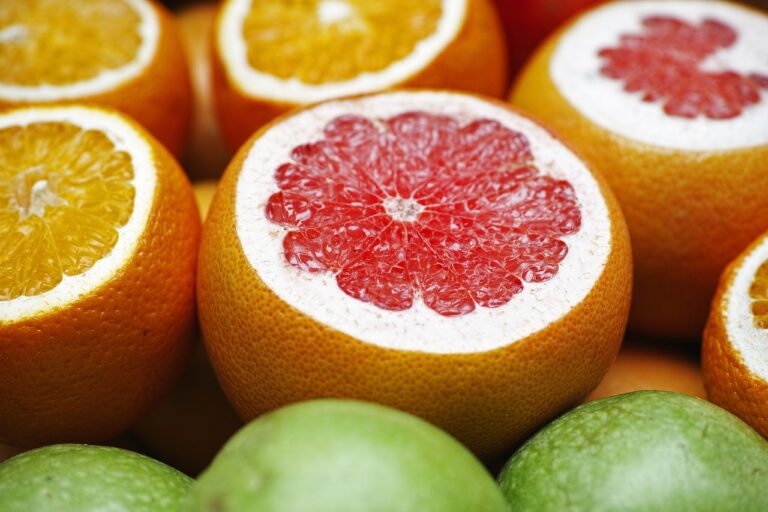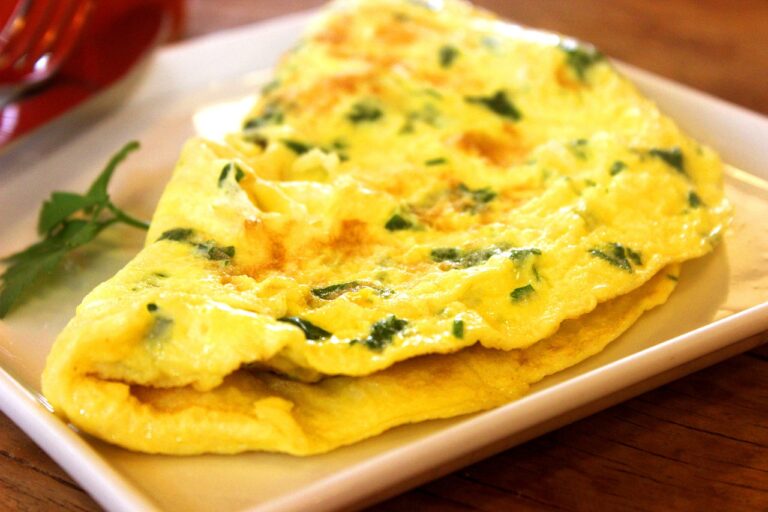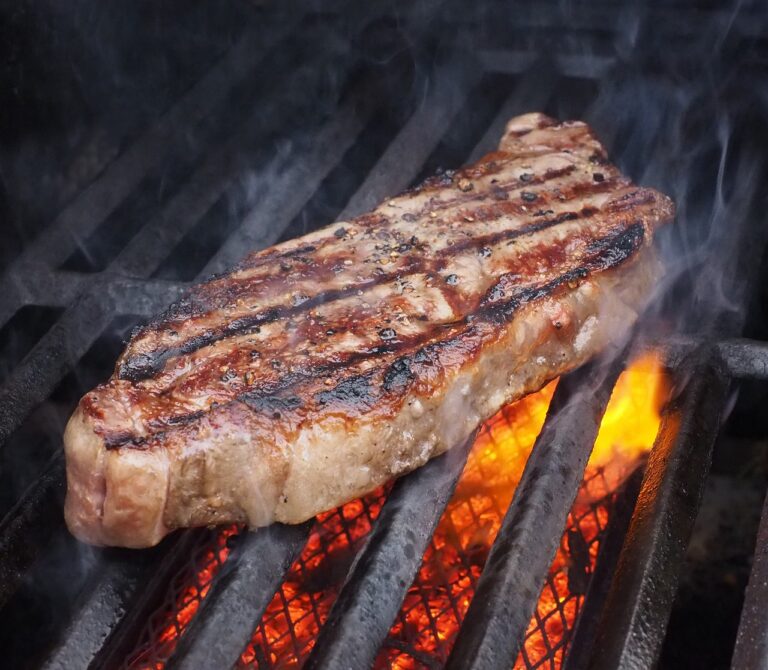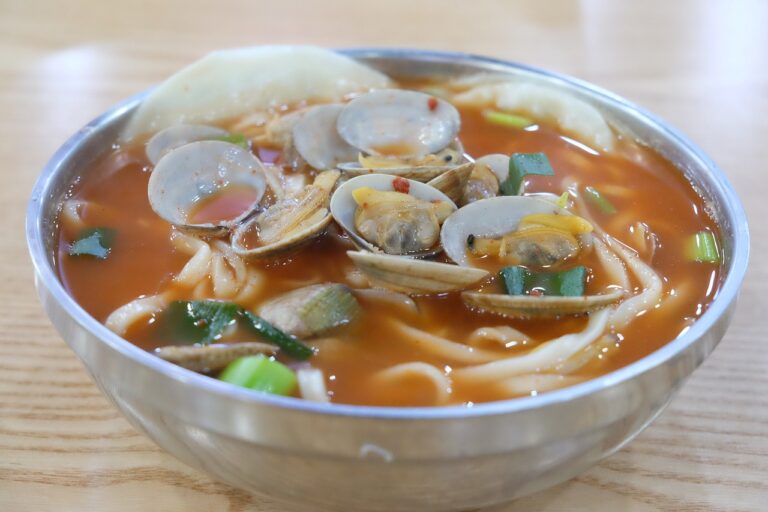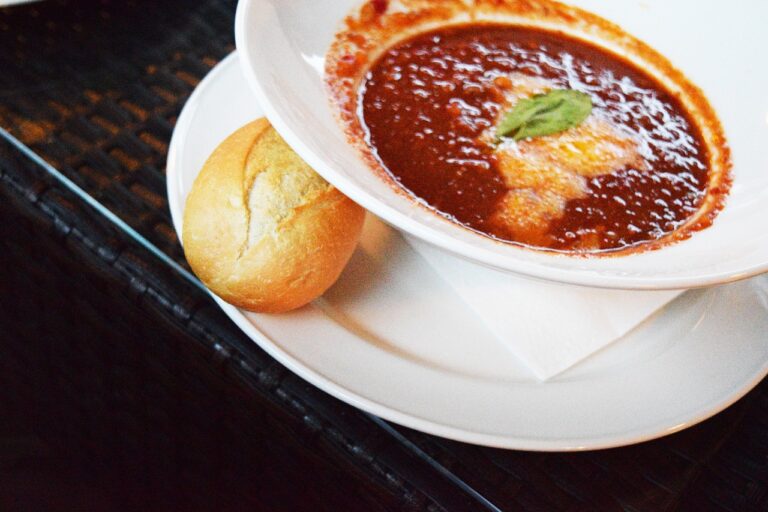Discover 10 Reasons Why You Are Craving Pasta
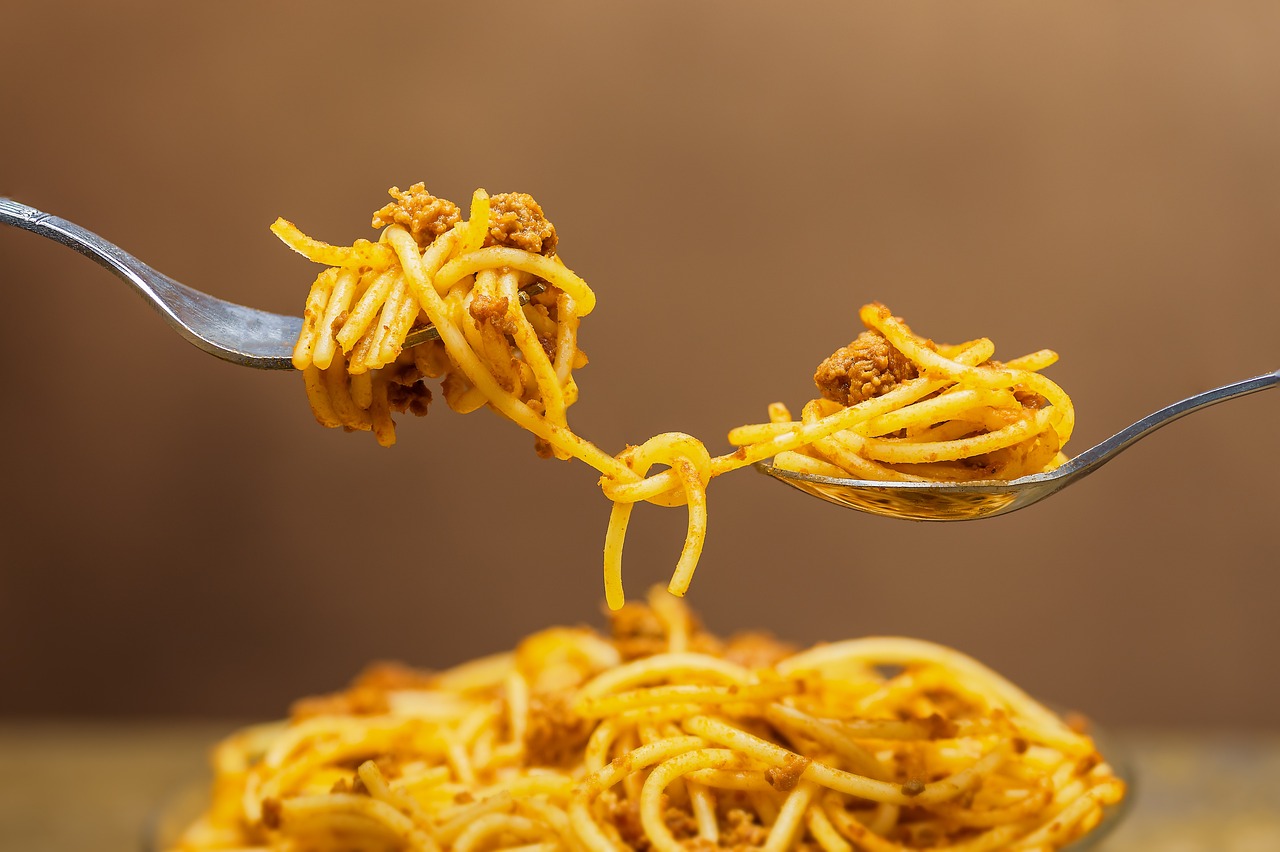
Pasta, with its rich history and global appeal, has woven its way into the fabric of countless cultures, tantalizing taste buds and satisfying stomachs. Whether it’s spaghetti, penne, or fettuccine, many of us have found ourselves yearning for that plate of pasta. But what drives this craving? In this article, we will explore 10 reasons why we find ourselves irresistibly drawn to this delightful dish.
Why Am I Craving Pasta?
1. Psychological Comfort
Pasta often holds a special place in our memories. Associated with family gatherings, Sunday dinners, and cozy nights in, it becomes a source of psychological comfort.
When we recall these moments of warmth and togetherness, the act of consuming pasta turns into a therapeutic exercise. The brain links the pleasure of eating pasta with cherished memories, leading to cravings whenever we seek comfort or a reminder of good times.
2. The Carbohydrate Connection
Carbohydrates, the primary component in pasta, are a quick source of energy. Our bodies naturally crave them when we’re feeling fatigued or rundown.
By consuming pasta, we replenish our glycogen stores, which results in an immediate boost of energy. This physiological need, paired with the delicious taste of pasta dishes, makes it a go-to option when our bodies need a pick-me-up.
3. Endorphin Release
Pasta, especially when paired with rich sauces, can lead to an endorphin release, which gives us a sense of well-being and pleasure.
These ‘feel-good’ chemicals play a crucial role in our mood regulation. When we eat pasta and experience this burst of happiness, our brain logs it as a positive experience, causing us to crave it more in the future.
4. Cultural Significance
For many, pasta is deeply tied to cultural and familial traditions. It becomes more than just a meal—it’s an experience, a ritual.
These cultural associations are powerful. When we crave pasta, it’s often not just for the dish itself but for the entire experience that surrounds it, from preparation to the communal act of sharing a meal.
5. Texture and Mouthfeel
The unique texture of pasta, both firm yet tender, provides a delightful mouthfeel that many find irresistible.
This sensation, paired with a flavorful sauce, creates a multi-dimensional culinary experience. The interplay of textures and flavors makes pasta dishes particularly crave-worthy and memorable.
6. Versatility of Dishes
The sheer variety of pasta dishes available ensures that there’s something for everyone, from creamy alfredo to spicy arrabbiata.
This versatility means that regardless of our current flavor preferences or mood, there’s likely a pasta dish that fits the bill, leading to frequent cravings as there’s always a new pasta recipe to try or an old favorite to return to.
7. Social Influence
In our connected world, seeing photos of scrumptious pasta dishes on social media can instantly trigger a craving.
From food bloggers to friends sharing their dinner pics, the visual appeal of a well-presented pasta dish can spark an immediate desire to indulge in a similar meal.
8. Affordability and Accessibility
Pasta is often cost-effective and easy to prepare, making it a convenient choice for many households.
When looking for a satisfying meal that won’t break the bank, pasta often comes to mind. Its easy availability and the simplicity of whipping up a pasta dish contribute to its crave-worthy status.
9. Pairing with Favorites
The ability to pair pasta with various ingredients, from meats to vegetables, allows us to incorporate our favorite flavors.
This customization ensures that our pasta dishes remain exciting and tailored to our personal preferences, making the craving for a pasta dish that incorporates our favorite ingredients hard to resist.
10. Evolutionary Preference
Historically, humans have been drawn to energy-dense foods as they provided the necessary calories for survival.
Pasta, being calorie-rich, taps into this evolutionary preference. Our ancestors sought out foods that would sustain them, and this intrinsic drive for calorie-dense foods like pasta still exists within us.
Craving Alfredo Pasta
Craving Alfredo pasta often stems from a desire for rich and creamy flavors. The combination of butter, heavy cream, and Parmesan cheese offers a comforting and satisfying taste that many find irresistible. This craving may also be tied to a need for carbohydrates, providing a quick source of energy.
Additionally, Alfredo pasta can evoke memories of special occasions or family dinners, adding an emotional component to the craving. For some, the texture of the pasta combined with the creamy sauce is appealing, offering a sensory experience that other foods might not provide. Finally, craving Alfredo pasta could indicate a lack of certain nutrients in the diet, such as calcium from the cheese, prompting the body to seek out specific foods.
Craving Bread And Pasta
Craving bread and pasta is often a sign of the body’s natural desire for carbohydrates, which are a primary source of energy. These foods release serotonin, a neurotransmitter that boosts mood and creates a sense of happiness and comfort. The texture and taste of bread and pasta can also be particularly satisfying, fulfilling a desire for something chewy or soft.
People might crave these foods during times of stress or when they need a quick energy boost. The craving could also be linked to dietary habits or deficiencies, where the body is seeking to balance its nutritional intake. Moreover, cultural and personal preferences play a significant role, as bread and pasta are staple foods in many diets, making them familiar and comforting choices.
Craving Cheese And Pasta
Craving cheese and pasta together could be attributed to the body’s need for both carbohydrates and fat, offering a fulfilling and energy-rich meal. The combination of textures and flavors, from the smoothness of the cheese to the firmness of the pasta, satisfies a wide range of taste preferences. Cheese is also a source of calcium and protein, which the body may be seeking out through these cravings.
These cravings can be linked to emotional eating, as cheese and pasta dishes are often associated with comfort and warmth. For many, these foods are reminiscent of home-cooked meals and can evoke a sense of nostalgia. Additionally, the versatility of cheese and pasta meals, allowing for various combinations and flavors, can make them particularly appealing to those looking for both nutrition and taste.
Craving Cold Pasta
Craving cold pasta might reflect a desire for something refreshing and easy to digest, especially during warmer weather. Cold pasta dishes, such as pasta salads, often include a variety of flavors and textures, including vegetables and dressings, which can satisfy a wide range of taste preferences. This craving could also indicate a need for convenience, as cold pasta can be prepared in advance and stored easily.
The acidity and freshness of dressings used in cold pasta dishes can stimulate the appetite, making them appealing when one desires something tangy or slightly sour. Additionally, cold pasta can be a source of complex carbohydrates, providing a steady release of energy over time. The preference for cold pasta might also stem from dietary habits or restrictions, offering a fulfilling meal that is both satisfying and adaptable to individual needs.
Craving Creamy Pasta
Craving creamy pasta is often a desire for rich, comforting textures and flavors that come from ingredients like cream, cheese, and butter. These ingredients provide a satisfying mouthfeel and can trigger feelings of comfort and contentment. The craving for creamy pasta may also be linked to a need for calories and fat, which these dishes provide in abundance.
Such cravings can be intensified by emotional states, where individuals seek out comfort foods that are rich and indulgent to alleviate stress or sadness. The warmth and soft texture of creamy pasta make it an ideal comfort food, offering both physical and emotional satisfaction. Additionally, the versatility of creamy pasta, able to incorporate a variety of ingredients, can appeal to those seeking both flavor and nutritional value.
Craving Dry Pasta
Craving dry pasta could be indicative of a desire for simple, unadorned foods that offer a straightforward eating experience. The texture of dry pasta, particularly when cooked al dente, provides a satisfying chewiness that isn’t found in softer or creamier dishes. This craving may also stem from a need for carbohydrates, as pasta is a rich source of energy.
For some, the simplicity of dry pasta allows for a focus on the quality and taste of the pasta itself, without the distraction of heavy sauces or seasonings. It could also reflect a preference for lighter meals, where one is seeking satisfaction without the heaviness of added fats and creams. Additionally, dry pasta serves as a versatile base for a variety of toppings and seasonings, allowing individuals to customize their meal according to their nutritional needs or taste preferences.
Craving Pasta And Cheese
Craving pasta and cheese is a common phenomenon, driven by the combination of carbohydrates from the pasta and rich fats from the cheese. This duo offers a comforting and satisfying meal, with the cheese adding a creamy texture and depth of flavor that enhances the pasta. The craving often signals a desire for comfort food, as pasta and cheese dishes are associated with warmth and nostalgia.
The high energy content of pasta and cheese can also satisfy hunger effectively, making it a go-to option for those seeking a fulfilling meal. The versatility of pasta and cheese dishes, accommodating various types of cheese and pasta shapes, can cater to a wide range of tastes and preferences. Additionally, these cravings might point towards a need for calcium or other nutrients found in cheese, indicating a dietary imbalance or specific nutritional requirement.
Craving Pasta At Night
Craving pasta at night may be attributed to the body’s need for carbohydrates to ensure a good night’s sleep, as they can increase the production of serotonin and melatonin, aiding in relaxation and sleepiness. Nighttime cravings for pasta can also stem from insufficient calorie intake during the day, leading the body to seek energy-dense foods. The comfort and satisfaction provided by pasta make it an appealing choice for ending the day on a comforting note.
The ritual of having a warm, comforting meal like pasta can also serve as a form of stress relief, helping to unwind after a long day. For many, pasta at night may fulfill not just a nutritional need but also a psychological one, offering a sense of comfort and familiarity. Additionally, the convenience and quick preparation time of pasta make it a practical choice for a late-night meal, catering to both hunger and the need for ease.
Craving Pasta During Pregnancy
Craving pasta during pregnancy is quite common, largely due to the body’s increased need for carbohydrates, which provide essential energy for both the mother and the growing fetus. Pasta can also be a comforting food, helping to ease morning sickness or satisfy specific taste preferences that change during pregnancy. The versatility of pasta, allowing for a variety of preparations, can accommodate the fluctuating cravings and aversions common in pregnancy.
These cravings may also indicate the body’s need for certain nutrients found in pasta dishes, such as folic acid, when enriched pasta is consumed, which is crucial for fetal development. The desire for pasta can be part of a broader craving for carbohydrates, which are needed in larger quantities during pregnancy to support the increased metabolic demands. Additionally, pasta meals can provide a sense of comfort and normalcy during a time of significant change, fulfilling both physical and emotional needs.
Craving Pasta For Breakfast
Craving pasta for breakfast might seem unusual, but it can be attributed to the body’s overnight fast and the subsequent need for a carbohydrate-rich meal to replenish energy stores. Pasta, being high in carbohydrates, can provide the necessary fuel to start the day, offering both quick and sustained energy release. This craving could also be a sign of an unmet need for comfort, as pasta dishes are often associated with warmth and satisfaction.
In some cultures, pasta for breakfast is not uncommon, reflecting dietary habits and preferences that differ from the typical breakfast foods. The versatility of pasta allows for lighter preparations suitable for morning consumption, incorporating ingredients like eggs and vegetables for a balanced meal. Additionally, craving pasta in the morning might indicate a deficiency in certain nutrients, such as B vitamins, which are essential for energy production and can be addressed by consuming whole grain or enriched pasta.
Craving Pasta Salad
Craving pasta salad often signals a desire for a refreshing and satisfying meal, particularly in warmer weather. The combination of cold pasta with crisp vegetables and a tangy dressing provides a balance of flavors and textures that can be particularly appealing. Pasta salad can also satisfy the need for a meal that is both filling and nutritious, offering a variety of nutrients from the vegetables and carbohydrates from the pasta.
This craving may reflect a desire for convenience, as pasta salads can be made in advance and stored, making them an easy option for meals throughout the week. The versatility of pasta salad, allowing for countless ingredient combinations, caters to a wide range of taste preferences and dietary needs. Additionally, the craving for pasta salad could be linked to a desire for lighter meal options that are satisfying without being heavy, providing a fulfilling meal without the lethargy that can accompany richer foods.
Craving Pasta Sauce
Craving pasta sauce is often related to a desire for the rich and complex flavors that these sauces provide. Whether it’s the tanginess of a tomato-based sauce, the creaminess of an Alfredo sauce, or the spiciness of an arrabbiata, pasta sauces can satisfy a wide range of flavor cravings. The craving for pasta sauce may also indicate a need for comfort food, as these sauces are typically associated with warmth and heartiness.
Sauces can also serve as a vehicle for a variety of nutrients, including vitamins and minerals from tomatoes and other vegetables, making them a nutritious addition to a meal. The desire for pasta sauce might reflect a craving for umami, the savory taste that is richly present in many pasta sauces. Additionally, the act of preparing and simmering a sauce can be therapeutic, providing a sense of accomplishment and nurturing.
Craving Pasta When Sick
Craving pasta when sick can be attributed to the body’s need for easy-to-digest, comforting foods that provide quick energy without taxing the digestive system. Pasta is often seen as a bland food that can soothe upset stomachs, making it a go-to option during illness. The warmth of cooked pasta can also provide comfort, helping to alleviate symptoms like chills.
The craving for pasta during sickness might also stem from childhood memories of being cared for, as pasta dishes are commonly prepared for someone who is unwell. The simplicity of pasta, especially when served with mild sauces or simply with butter or olive oil, can appeal to those with reduced appetites. Additionally, eating pasta can help meet the increased nutritional needs of the body during recovery, providing the necessary energy to fight off illness.
Craving Ramen Noodles
Craving ramen noodles can stem from a desire for something savory and comforting, as the broth and noodles offer a satisfying combination of flavors and textures. The warmth of ramen is particularly appealing in cold weather or when one is in need of comfort. Ramen noodles can also satisfy a craving for salt, which is often present in the broth and seasoning packets.
The versatility of ramen, allowing for various additions like vegetables, eggs, and meats, can cater to a wide range of taste preferences and nutritional needs. Craving ramen might also reflect a desire for quick and convenient meals, as ramen is easy to prepare and customize. Additionally, the experience of eating ramen, which can be both nourishing and soothing, may evoke a sense of nostalgia or familiarity for many people.
Craving Tuna Pasta
Craving tuna pasta can indicate a desire for a meal that is both nutritious and satisfying, combining the carbohydrates of pasta with the protein and omega-3 fatty acids of tuna. This combination can provide a balanced meal that satisfies hunger while offering health benefits. The craving for tuna pasta might also stem from a desire for something savory and slightly salty, as tuna adds a distinct flavor to the dish.
Tuna pasta dishes are often simple to prepare, making them appealing for those seeking a quick and easy meal option. The versatility of tuna pasta, which can be enjoyed hot or cold, makes it suitable for various occasions and preferences. Additionally, craving tuna pasta could be linked to specific nutritional needs or deficiencies, such as the body’s need for omega-3 fatty acids, which are important for heart health and brain function.
Cravings Miso Pasta
Cravings for miso pasta can be attributed to a desire for unique, umami-rich flavors that miso paste provides. The combination of miso with pasta offers a novel taste experience, blending traditional Italian and Japanese ingredients for a fusion dish that is both savory and comforting. This craving might also indicate a desire for nutritious meals, as miso is known for its health benefits, including probiotics, which support gut health.
The rich, complex flavor of miso pasta can satisfy those looking for more gourmet or unconventional pasta dishes. This craving may also reflect an interest in culinary exploration, seeking out dishes that combine familiar ingredients in new and interesting ways. Additionally, the comfort and satisfaction associated with pasta dishes, combined with the healthful properties of miso, make miso pasta a compelling choice for those seeking both taste and nutritional value.
How To Stop Craving Pasta
Stopping pasta cravings may involve addressing the underlying reasons for the craving, such as nutritional deficiencies or emotional triggers. Incorporating complex carbohydrates from whole grains, vegetables, and legumes into one’s diet can provide the body with the energy it needs while keeping cravings at bay. It’s also important to ensure a balanced intake of proteins, fats, and fibers, which can help stabilize blood sugar levels and reduce the urge to indulge in carb-heavy foods like pasta.
Mindful eating practices can help identify emotional eating patterns and offer alternative ways to cope with stress or boredom. Finding satisfying alternatives to pasta, such as spiralized vegetables or whole grain options, can fulfill the texture and taste desires without relying on refined carbs. Lastly, staying hydrated and maintaining a regular eating schedule can prevent misinterpreting thirst or hunger cues as specific food cravings, helping to reduce the overall desire for pasta.
Satisfy Your Pasta Craving
Satisfying your pasta craving in a healthy manner involves finding a balance between indulgence and nutrition. Opting for whole grain or legume-based pasta can provide a more nutrient-dense option, offering fiber, vitamins, and minerals in addition to satisfying the craving. Incorporating a variety of vegetables into pasta dishes can also enhance their nutritional profile while adding color, texture, and flavor.
Choosing lean proteins like chicken, fish, or plant-based alternatives to add to pasta can make the meal more satisfying and balanced. Experimenting with homemade sauces using fresh ingredients can reduce the sodium and sugar content often found in store-bought versions, making your pasta dish healthier. Finally, practicing portion control and mindful eating can help enjoy pasta dishes without overindulgence, allowing for a satisfying meal that meets both taste and health needs.
Conclusion
Pasta, in its myriad forms and flavors, has a unique allure that’s hard to deny. From psychological comfort to evolutionary preferences, the reasons behind our pasta cravings are multifaceted. Recognizing and appreciating these reasons can enhance our enjoyment of this timeless dish, turning every pasta meal into a celebration of taste, tradition, and togetherness.


